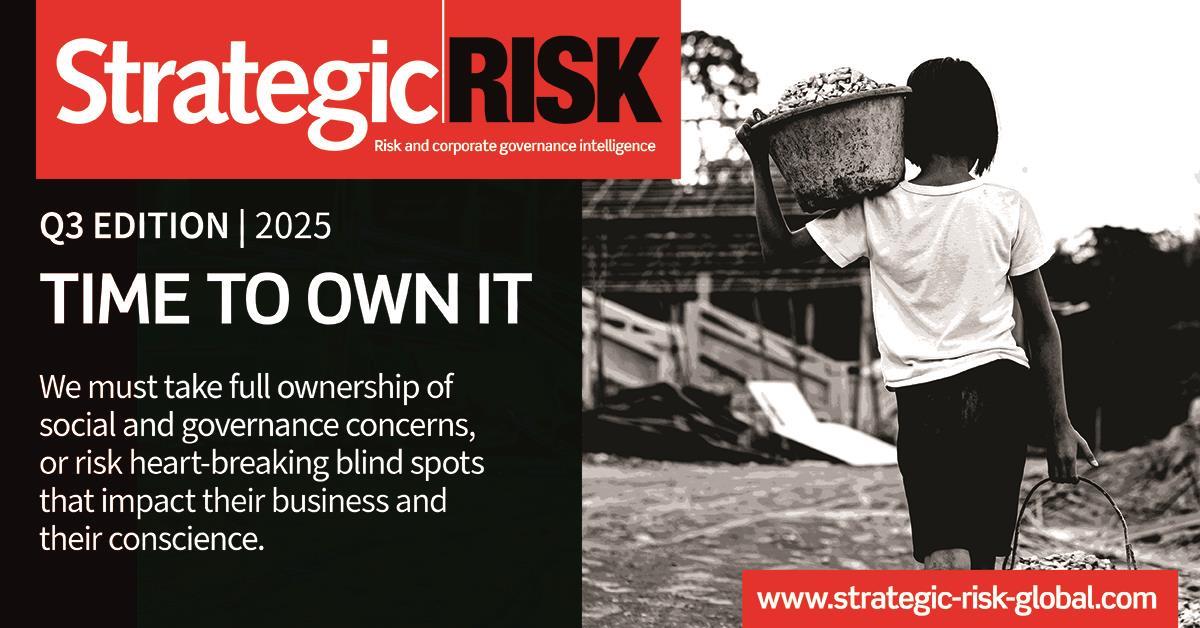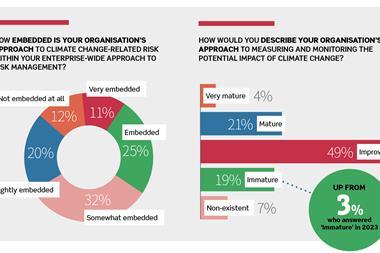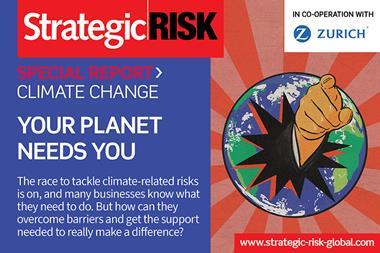The world is experiencing a nature crisis, and a new report aims to help businesses deal with the emergency. We analyse the key takeaways for risk managers
The world is experiencing a nature crisis, with one million of the estimated eight million species of plants and animals in the world at risk of extinction and around 75% of the Earth’s land surface significantly altered by human actions.
To help risk managers battle this crisis, AXA XL, in partnership with Nature Positive, has launched a new report that shows how companies can identify, assess and mitigate nature-related risks.

The report also deep dives into the risks and the opportunities that exist across seven key industries:
- aquaculture
- chemicals
- construction materials
- food, drink and agriculture
- mining and metals
- renewable energy generation
- textiles, apparel and fashion
AXA XL’s global head of sustainability, Suzanne Scatliffe said: “About 50% of the world’s GDP is moderately or highly dependent on nature. To be resilient to the rapid and profound environmental changes occurring now, and in the future, it’s imperative businesses adequately value and manage the nature-related risks across their entire value chain.”
Nature Positive, an RSK Group company, worked with AXA XL to develop a set of insights underpinned by comprehensive reviews of academic papers, industry reports and the guidance from the Taskforce on Nature-related Financial Disclosures (TNFD).
Dr. Richard Young, managing director, Nature Positive, said: “Nature is in trouble. In the past 50 years, wildlife populations have, on average, declined by 69%. Most of the planet’s wild grasslands and freshwater wetlands have been lost or heavily degraded, and one-third of our natural forests has been converted for human use. The continuing degradation of nature and biodiversity presents significant risks to business both now and in the future”
Dr. Young said the Nature Risk Insights Report had been developed to enable businesses, and in particular risk managers, to make a start on their nature journey. “Our aim is for you to understand how to begin identifying your nature-related risks and to start making a meaningful difference for nature and for your business.”
Key takeaways and next steps for risk managers
In the report, AXA XL advises that risk managers need to understand the extent to which nature is material to the business.
It says: “All businesses are directly or indirectly reliant on the natural world, but the impact and financial materiality of nature and biodiversity to business varies across sectors.”
A good starting point is to understand the nature impacts, dependencies, risks and opportunities for your sector, business or business activity.
It advises that one useful tool for conducting such a high-level materiality assessment is ENCORE (Exploring Natural Capital Opportunities, Risks and Exposure).
This comprehensive online evidence base provides scientifically robust information on the nature impacts and dependencies of 167 economic sub-industries with materiality ratings and narrative descriptions to understand their significance to your business, as well as accompanying reference papers and the underpinning evidence.
It is intuitive to use and provides supporting resources to aid use and interpretation.
The AXA XL report outlines five further actions that risk managers, along with wider stakeholders, should take to understand the importance of nature to the business.
1) Knowledge and awareness
Nature is a vast and complicated topic, including everything from wildlife to ecosystems and the environment. It’s essential for everyone in the company to have a basic understanding of nature and biodiversity and know why these are important for business success.
The TNFD has useful resources to help build this knowledge, and the United Nations Development Programme (UNDP) offers a micro-course on nature and why it matters to businesses. This e-learning catalogue also features a range of options on biodiversity in business, finance and law.
2) Screening
To identify significant nature-related issues, you should conduct a high-level screening exercise, based on readily available company informationm such as product or service strategies, operating locations, distribution networks.
The results of the initial materiality assessment (through ENCORE), allows you to broadly define the areas of your company’s ‘value chain’ that you may want to assess more fully.
The Integrated Biodiversity Assessment Tool (IBAT) can also be useful to access global biodiversity datasets, and there are a number of tools freely available online, such as the World Resources Institute Aqueduct Tool and WWF Biodiversity and Water Risk Filter.
3) Existing data, risks, and controls
Identifying and collating relevant existing data and/or risks and controls through colleague collaboration and scanning of current systems and reports can help highlight where data or information gaps might exist.
These gaps can then be prioritised and included in a resulting business case outline.
4) Stakeholders
Fully engaging with priority stakeholders across key parts of your value chain, and asking the right questions, is key to developing areas of potential collaboration, understanding pain points and ultimately ensuring effective assessment of nature risks.
Plotting the company’s stakeholders on a matrix, with two intersecting variables such as interest and influence, map help identify which part of the value chain or which stakeholder groups should be considered a priority to engage.
Engagement tools could include questionnaires or surveys, focus groups or even forming a stakeholder committee to develop dialogue on nature-related risks and opportunities, as well as addressing initial data gaps.
There should also be detailed discussions with key departments within the organisation where nature may be relevant to help define material risks and opportunities.
5) Outline business case
Once you’ve gathered this information, you will be in a position to develop a business case, if required, to engage with decisionmakers for taking further company action on nature.
It should outline the commercial imperative of assessing nature risks and recommendations for next steps, including, if feasible at this stage, outlining the potential costs and resources required. It might also include the identified risks, assumptions, issues, and dependencies (RAID log), alongside the opportunities and benefits relevant to your business.














No comments yet